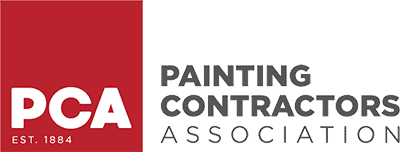Embarking on an interior painting project can be an exciting endeavor, but it’s essential to approach it with care and attention to detail to ensure professional-grade results. Unfortunately, many homeowners fall victim to common pitfalls that can compromise the quality of their paint job. In this comprehensive guide, we’ll explore the top 10 interior painting mistakes to avoid and provide practical solutions to help you achieve flawless results in your home.
Ignoring Surface Preparation
One of the most crucial steps in any painting project is surface preparation. Ignoring this step or not giving it enough attention can lead to poor adhesion, peeling, and uneven coverage. Before painting, thoroughly clean the walls to remove dust, dirt, and grease. Repair any cracks or holes with spackle and sand the surface smooth for optimal paint adhesion.
Using Low-Quality Paint
Investing in high-quality paint is essential for achieving professional-looking results that stand the test of time. Low-quality paints may have poor coverage, lack durability, and result in uneven finishes. Choose reputable brands known for their quality and durability, even if they come with a slightly higher price tag. The investment will pay off in the long run with a beautiful, long-lasting paint job.
Skipping Primer
Primer is a crucial step in the painting process that should never be overlooked. It helps to seal the surface, improve paint adhesion, and ensure uniform color and sheen. Skipping primer can result in uneven coverage, especially when painting over porous or dark-colored surfaces. Invest in a high-quality primer and apply it before painting to ensure the best possible results.
Overlooking Proper Ventilation
Proper ventilation is essential when painting indoors to ensure adequate airflow and prevent the buildup of paint fumes. Failing to ventilate the room properly can result in strong odors, headaches, and even health issues. Open windows and doors, use fans, and consider wearing a mask to protect yourself from inhaling paint fumes. Additionally, avoid painting in high humidity or extreme temperatures, as this can affect the drying time and quality of the paint job.
Rushing the Job
Patience is key when it comes to interior painting. Rushing through the process can lead to sloppy results, uneven coverage, and missed spots. Take your time to prep the surfaces properly, apply the paint carefully, and allow each coat to dry fully before moving on to the next. It’s better to take your time and do the job right the first time than to have to redo it later.
Applying Too Many or Too Few Coats
Achieving the right number of paint coats is crucial for a successful paint job. Applying too many coats can result in a buildup of paint, leading to drips, streaks, and an uneven finish. On the other hand, applying too few coats may result in patchy coverage and allow the underlying surface to show through. Follow the manufacturer’s recommendations for the number of coats needed and apply them evenly for the best results.
Not Using the Right Tools
Using the right tools can make a significant difference in the quality of your paint job. Invest in high-quality brushes, rollers, and paint trays for smooth and even application. Additionally, choose the appropriate tools for the job, such as angled brushes for cutting in and rollers with the correct nap for the surface being painted. Using the wrong tools can result in uneven coverage, brush marks, and other imperfections.
Painting Over Wallpaper or Textured Surfaces
Painting over wallpaper or textured surfaces can lead to a variety of issues, including bubbling, peeling, and an uneven finish. Before painting, it’s essential to remove any wallpaper and smooth out textured surfaces to create a flat, even base for the paint. Use a wallpaper steamer or chemical wallpaper remover to remove wallpaper, and sand textured surfaces smooth before priming and painting.
Not Allowing Sufficient Drying Time
Proper drying time between coats is crucial for achieving a smooth and even finish. Rushing the drying process can result in tacky or sticky paint, which can lead to smudging, streaking, and other imperfections. Allow each coat of paint to dry fully according to the manufacturer’s recommendations before applying the next coat. Additionally, avoid painting in humid or cold conditions, as this can prolong the drying time.
Not Protecting Surfaces and Furniture
Failing to protect surfaces and furniture during the painting process can lead to accidental spills, splatters, and stains. Before painting, cover floors, furniture, and fixtures with drop cloths or plastic sheeting to prevent damage. Use painter’s tape to protect trim, baseboards, and other adjacent surfaces from paint splatter. Taking the time to properly protect your space will help ensure a clean and professional-looking paint job.
Conclusion
By avoiding these common interior painting mistakes and following the practical solutions provided in this guide, you can achieve professional-grade results that enhance the beauty of your home. Remember to prioritize surface preparation, invest in high-quality materials, use proper ventilation, and take your time to ensure a flawless finish. With the right approach and attention to detail, you’ll be rewarded with a beautiful paint job that you can enjoy for years to come.
Looking For Trusted Painters in Tri-State Area?

